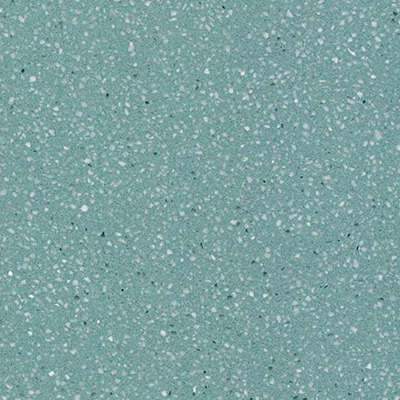|
Terrazzo ceramic tile has emerged as a popular choice in the world of interior and exterior design, offering a unique combination of aesthetic charm and practical performance.

Composition and Manufacturing Process
Terrazzo ceramic tiles are crafted through a meticulous process. They are typically made from a blend of ceramic materials, which provide the base structure and durability. To create the characteristic terrazzo look, various colored aggregates like marble chips, granite fragments, or colored glass pieces are incorporated into the ceramic mixture. These aggregates are carefully selected for their quality and visual appeal.
The manufacturing process involves shaping the mixture into tiles using molds and then firing them at high temperatures. This firing step not only solidifies the tile but also enhances its strength and resistance to wear and tear. After firing, the tiles may undergo additional finishing processes such as grinding and polishing to bring out the beauty of the embedded aggregates and achieve a smooth, shiny surface.
Aesthetic Appeal
One of the most alluring aspects of terrazzo ceramic tile is its visual appeal. The combination of the ceramic base and the scattered aggregates creates a captivating and textured appearance. There is a vast array of color options available, ranging from soft pastels to bold and vibrant hues. Whether you prefer a monochromatic look with subtle variations or a more eclectic mix of colors and patterns, terrazzo ceramic tiles can fulfill your design desires.
For instance, in a modern living room, using terrazzo ceramic tiles with a blend of white ceramic and flecks of blue and gray aggregates can add a touch of sophistication and a contemporary feel. In a commercial setting like a trendy coffee shop, bright and colorful terrazzo ceramic tiles with unique patterns can become a focal point, attracting customers and creating a lively atmosphere.
Durability and Performance
Terrazzo ceramic tiles are known for their excellent durability. The ceramic base makes them resistant to scratches, impacts, and abrasions, which means they can withstand heavy foot traffic in areas such as hallways, kitchens, and entryways. They are also highly resistant to moisture, making them suitable for both indoor and outdoor applications. Whether it's a bathroom floor, a patio, or a balcony, these tiles can maintain their integrity and appearance over time.
Moreover, terrazzo ceramic tiles are relatively easy to clean and maintain. Regular sweeping and mopping with a mild detergent are usually sufficient to keep them looking pristine. Unlike some natural stone materials that may require special sealing or treatments, terrazzo ceramic tiles have a more straightforward maintenance routine.
Installation Flexibility
Another advantage of terrazzo ceramic tile is its installation flexibility. They can be installed using various methods, depending on the specific requirements of the project. Traditional mortar installation is common for larger areas or for a more permanent and sturdy finish. However, for smaller DIY projects or for areas where a quicker installation is desired, adhesive-backed terrazzo ceramic tiles are also available, allowing for easy and convenient application.
In conclusion, terrazzo ceramic tile is a versatile and attractive option for enhancing the beauty and functionality of different spaces. Its unique aesthetic, durability, and installation flexibility make it a top choice for homeowners, designers, and contractors alike when looking to create a stylish and long-lasting environment, whether it's for residential or commercial use.
|